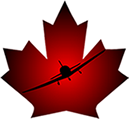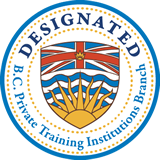 |
|
Understanding the Spin
“...in practice stalls and
spins the ground only
-Leighton Collins- I remember
all too well my first experience with a spin. We had been practicing slow
flight and stalls when my instructor asked me to climb to 4000’ AGL. He took
control of the aircraft and said, with a big smile, “I’m going to show you
something.” He abruptly
pulled the nose up and jammed in full left rudder. The aircraft rolled
up-side down; both doors popped open; the nose pointed straight down at the
fields below. The world began to spin violently around; details in the
fields below grew clearer in a big hurry. He
recovered from the manoeuvre and helped me close the doors. Turning to me he
asked, “Are you OK?” “Not really,” I replied as I began to re-consider my
decision to earn a pilot licence. It may not
have been the ideal manner in which to introduce a student pilot to the
spin, but the experience certainly did leave a deep and lasting impression.
I approached the spin manoeuvre with a less than enthusiastic attitude for
some time. Since then,
I have taken some time to learn about the manoeuvre, to come to a better
understanding of exactly what takes place during the event and to experience
quite a number of spins in various aircraft. If I
understand how something works, what events will occur during a sequence and
what positive steps I can take to rectify a problem, I find I am in a much
better position to deal with it effectively. In a paper
presented at the NTSB General Aviation Accident Prevention Symposium, The fact
that one in four aviation fatalities is tied to the stall/spin is certainly
an excellent argument for why spin training is included in pilot training in Our friends
south the line, in their wisdom, discontinued spin training in 1949 in
favour of increased stall training and have hardly looked back since
although a number of specialized schools do provide spin training for those
interested in the manoeuvre. And, indeed, the number of stall/spin accidents
reported in NTSB accident data since 1949 has decreased. While for
many student pilots spin training is perhaps not a highlight of their
training schedule, learning how to successfully and skilfully recognize the
sequence of events leading up to the spin and how to prevent an inadvertent
spin can save lives. So, what
exactly happens when we spin an aeroplane? We cause or
allow an aeroplane to spin by allowing or inducing a stall aggravated by
yaw. If an aeroplane is not allowed to stall it cannot spin. If it stalls
without yaw movement, it cannot spin. An
aerodynamic stall results when a wing exceeds its critical angle of attack,
regardless of airspeed or attitude. Normally, in training, we stall the
aircraft at reduced airspeed at something approaching a normal flight
attitude but airspeed and attitude are not the important factors. Angle of
attack is. If an
aeroplane is stalled and at the same moment allowed or caused to yaw, the
result is entry to an aerodynamic spin. Yaw may be induced in a variety of
ways including improper use of rudder, incorrect use of ailerons, failing to
compensate for engine torque, or from turbulence. Normally, in training, we
intentionally and knowingly use rudder “incorrectly” to allow or produce the
required yaw. Typically,
unintentional spins occur during take-off or landing when rudder is not
correctly applied to maintain coordinated flight or, during a climbing turn
manoeuvre when the aircraft is allowed or caused to stall. In level or
descending flight, as the wings stall during a yawing movement, the outside
wing, the wing opposite the direction of yaw, will be travelling through the
air at a slightly faster speed with a slightly lower angel of attack than
the inside wing. The inside wing stalls first and loses lift sooner than the
outside wing. We experience this as a wing drop and learn during training
that corrective steps must be taken quickly to prevent entering a spin. In a
climbing manoeuvre involving turn and thus yaw, the outside wing has a
higher angle of attack and will stall first producing a spin in the opposite
direction of the yawing movement. This is referred to as a departure stall
as it typically occurs during the climb-out phase of flight—perhaps in an
attempt to clear an obstacle, return to the aerodrome following an engine
failure, or demonstrate our advanced piloting skills for the amazed
onlookers on the ground. The departure stall/spin can be a very disorienting
event, particularly if it comes as a surprise. & Initially,
the rate of rotation about the normal axis, yaw, may be quite minimal, but
it increases rapidly. This causes the inside wing, in the case of level or
descending flight, or the outer wing, in the case of a climb, to become more
deeply stalled. The aircraft drops its nose, increases its rate of yaw
towards the more deeply stalled wing and begins to lose its forward
momentum. Its flight path takes a more and more vertical trajectory
increasing the angle of attack for both wings and the rate of yaw rotation. & This process—called autorotation—tends to be self sustaining: the faster the aeroplane rotates about its normal axis the greater the difference in lift produced by the wings. The aeroplane begins to rotate about its normal axis and assume a helical, vertical flight path causing the details of the ground below to become increasingly clear and the pilot to become increasingly interested.o:p> At the
moment of stall, as we remember from ground school, the centre of
pressure—the point through which lift acts—after moving forward as we
approach the critical angle of attack moves rapidly aft causing the nose of
the aircraft to pitch downward, further increasing our vertical movement and
providing momentum to increase our rate of rotation about the normal axis. As the
aeroplane assumes a more and more vertical flight path, both wings become
deeply stalled: their angles of attack increase with the inside wing
remaining more deeply stalled than its outside brother or sister increasing
the tendency to autorotation. In a light,
training aeroplane, within something like 4 to 6 seconds, approximately the
first two turns about the normal axis, the machine establishes itself in a
fully developed spin. The attitude the aircraft assumes depends on a number
of factors including the location of its centre of gravity. The farther
forward the centre of gravity the more the aircraft will tend to assume a
nose down attitude. An extreme
aft centre of gravity may result in the aeroplane failing to put its nose
down sufficiently to allow recovery from the spin. Kids, don’t try this at
home. Once
established in a fully developed spin, the nose has a tendency to pitch
upward and the machine establishes a repeating pattern of yawing, rolling
and pitching as it continues to turn about its normal axis and descend in a
helical and vertical flight path. This fully
developed stage of the spin is maintained by a balance between aerodynamic
and inertial forces and movements and is, in its own way, a quite stable
condition. The
aeroplane continues to yaw about the normal axis as a result of the
differential lift produced by the wings: the outside wing is less stalled
and produces more lift than the inside wing. The inside wing, having a
higher angle of attack produces more drag, maintaining the autorotation
tendency. The aircraft pitches nose up/nose down as a result of the
aerodynamic and inertial forces produced by the yawing motion. Inertial
pitching results from the changing rate of rotation about the normal axis.
As the nose drops the rotation rate of the aircraft accelerates inducing an
increased tendency for the nose to rise which, in turn, slows the rate of
rotation resulting in the nose pitching downward. If you
would like to experience this first hand on the ground try this trick
suggested to my by one of my mentors, Bob: stand with your arms loosely at
your sides. Begin to spin around, rotate about your “normal axis”. You will
notice as your rate of rotation increases there is an increasing tendency
for your arms to raise themselves—inertial pitch. As your arms rise, you
will note increased difficulty in maintaining rate of rotation. The tendency
is to slow down the rate of rotation which then results in your arms
returning to your sides. As the
aircraft increases and decreases its rate of rotation through inertial force
changes, the differential lift produced by the wings increases and decreases
as well, resulting in a rhythmic rolling movement So, there
we are in a stable condition of rhythmic movements involving pitch, roll and
yaw as we descend in a helical and vertical flight path toward the ground
below. To recover
from the spin, it is necessary to upset this stable and interesting
condition. Normally,
we choose to achieve recovery through positive control inputs. Most training
aircraft are designed to recover on their own if we simply release the
pro-spin inputs: full rudder and full elevator. Positive recovery techniques
simply accelerate the recovery process which is normally considered useful.
It also allows the pilot to feel useful and needed and serves to boost his
or her self confidence. As interesting as the spin manoeuvre is, we
generally do not choose to prolong it any longer than necessary. Consult
your aircraft POH for the recommended technique for spin recovery. Of
course, for intentional spins we would choose to use an aircraft that is
both approved for spins and in the required condition of weight and balance. For most
training aircraft we can use the acronym PARE to remind us of the spin
recovery procedure. P is for power; A is for aileron; R is for rudder; E is
for elevator. If we have any flaps deployed on entry, we want to retract
them immediately after diagnosing spin entry. Flaps reduce our nose down
attitude flattening the spin and making recovery more difficult, and we may
easily exceed Vfe on recovery. Having flaps deployed may result in
structural damage to the machine. To recover:
flaps up; power idle; ailerons neutral; rudder initially full in the
opposite direction to the spin then neutral as soon as autorotation stops;
elevator reduce input as required to break the stall. We now find ourselves
in a power-off dive and can easily recover the aircraft to a normal flight
condition Spin
training is interesting and, at times, quite focusing. If we understand what
is happening and why and what we need to know and do about the situation, we
can find ourselves much more comfortable about the whole process. The key
knowledge and skill-set training is designed to give a pilot is recognition
of the conditions and symptoms leading up to spin entry and the necessary
techniques for preventing those conditions leading to the fully developed
spin. If we can avoid ever experiencing inadvertent spin entry we will
increase our opportunities to participate in flying for a much longer time
to come. Enjoy
|


